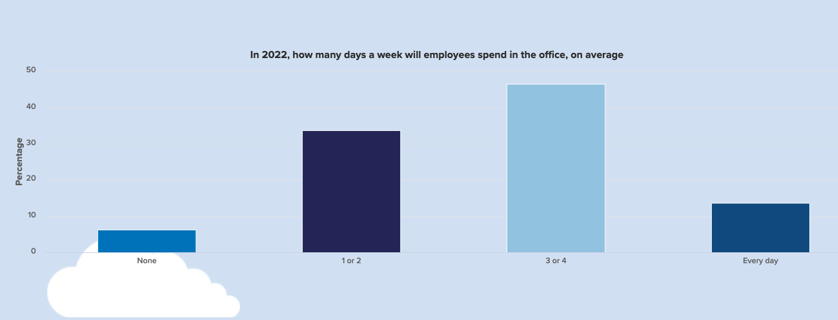November 02, 2021
4 Min Read

It’s the start of thousands of articles published every day: the future of work has changed and how business gets done will never be the same again. In many of these significant but obvious statements, the views or predictions of experts lay out the working patterns of organizations as they emerge from the worst of the Covid-19 pandemic.
What’s often missing is the data: the voices of those responsible for these strategies in practice. At Absolute, we canvassed the opinion of 400 IT and security leaders across the US and UK in a bid to better quantify and understand exactly how organizations are preparing for 2022.
The office vs the home
One of the most pertinent topics of conversation in IT circles right now is how to balance the benefits of remote working with the benefits of fixed location environments. Before evaluating exactly how businesses are planning to accommodate the best of both, it’s important to understand exactly what those benefits truly are. Respondents in the survey, which included leaders working in healthcare, government, education, legal, finance, public safety and other verticals. When asked to share the primary advantage of having employees work from the office, the most frequently-cited benefit was the ability to collaborate (43%), followed by the perceived strengthened security (22%).
There are clear compromises with regards to collaboration and security when it comes to distributed working, though allowing employees to work from elsewhere also brings with it several advantages. The data is clear – workers are generally significantly most productive and happy when working from outside the office.
Return to the office or remote working forever?
So how can organizations take advantage of the benefits of both types of working environments, while also avoiding the most significant drawbacks? The answer is by focusing on something in the middle, a concept typically referred to as hybrid working.
Just 13.7% of organizations are expecting to return entirely to fixed location working (some industries, like healthcare, have limited alternatives). An even smaller share, 6.2%, are planning on shifting to an entirely remote working model. Collectively, this means that over 80% of organizations are anticipating a hybrid working policy – with employees working some of the time in the traditional workplace, and some of the time elsewhere.
“As companies come to decisions on new working arrangements, they will be essentially making a basic trade-off: the expectation of greater creativity in new projects at the office, but greater productivity on existing tasks at home. And, as with most trade-offs, the right answer is not all or nothing – five days or zero days at home – but something in the middle.” - Nicholas Bloom, professor of economics / Stanford University

Work from anywhere is challenging
Overcoming the challenges of supporting a ‘work from anywhere’ policy is a focus for many IT and security teams. Security was listed as a major concern in supporting remote workforces in the Absolute study – managing risk was the number one drawback among participants.
For many, it appears as though meeting compliance and managing risk is harder for IT teams with distributed workers than office-based ones – but why? What are the specific challenges that organizations face when trying to secure the enterprise in a world where hybrid working is the norm?
According to the survey results, most IT leaders agree that the biggest challenge in managing risk is with technology – namely, having the right tools in place to mitigate it (54.1%). Getting the appropriate skills and personnel in place is less of a barrier, with only 18% of organizations struggling to establish a culture that supports hybrid working. Around a quarter (27.9%) of IT leaders instead point to processes and policies as an inhibitor to hybrid working success. Harmonizing security policies with HR protocols can pose problems, with shadow IT and rogue working practices often running rampant outside the traditional office.
![]()
Figuring out how to overcome it
Organizations are struggling to fully support hybrid working in a way that keep risk to workers low but productivity and experience high. Whether that is having the skills, personnel, culture, policy or technology, this is a high priority collection of tasks for many IT leaders as 2022 beckons.
For those seeking technology that scales to hybrid work environments, IT and security professionals should look to products such as those offered by Absolute Software – from ZTNA and experience monitoring to device recovery and endpoint resilience. Download the full research report for free to discover more about the findings, as well as reading about real case studies, expert opinions and the chance to benchmark against your peers.
Share this article